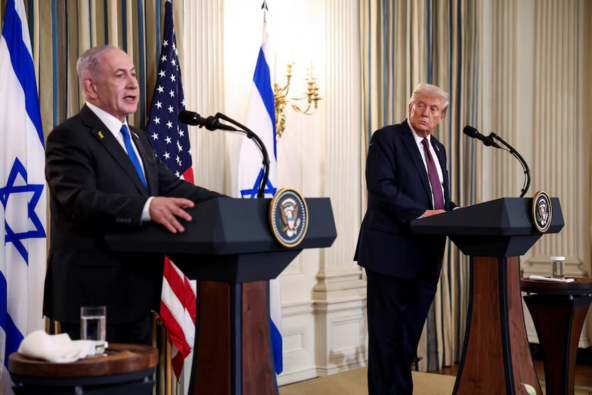A Bold Joint Announcement
In a high-stakes moment at the White House, President Donald Trump and Israeli Prime Minister Benjamin Netanyahu unveiled a new peace plan for Gaza. The spotlight was heavy, the tension real. Trump emphasized that he and Netanyahu were united in achieving a lasting ceasefire, while acknowledging Hamas has not yet agreed. (Based on Reuters)
The 20-point plan they presented calls for hostages to be exchanged, gradual Israeli withdrawal, disarmament of Hamas, and setting up a transitional government under international supervision.
Commitments, Conditions, and Doubts
Netanyahu publicly backed the plan, pledging Israeli support. He made clear that Israel would press ahead if Hamas refused. Trump thanked Netanyahu and asked that Hamas accept the proposal, or else Israel would continue military actions with U.S. backing.
However, not all is sealed. Hamas has remained silent. Many key details are still to be spelled out—and whether the plan holds when tested on the ground remains uncertain.
What the Plan Could Mean for Gaza’s Future
If accepted, the plan could bring a fragile calm to Gaza, begin reconstruction, and renegotiate regional dynamics. But failure could deepen mistrust.
For Israelis, the plan promises security and recovery. For Palestinians, it offers a path to governance—but only if they relinquish armed power.
For the world watching, it’s a line in the sand: whether diplomacy holds or war continues.
Global Reaction and What Comes Next
The proposal has drawn mixed reactions globally. Some nations have praised Trump’s efforts to bring both sides to the table, while others remain skeptical about whether Hamas will agree to such terms. Humanitarian groups have also called for more emphasis on rebuilding Gaza and protecting civilians.
The coming weeks will be crucial. If negotiations gain momentum, the region could see its first step toward peace in years. If not, the cycle of violence may continue — with even greater consequences.
















